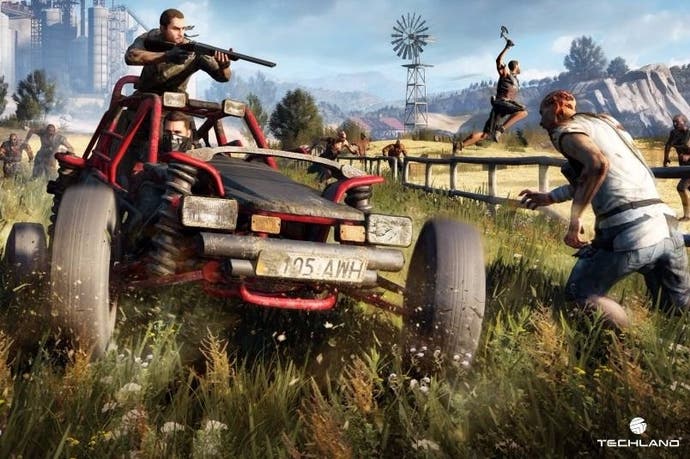Digital Foundry vs Dying Light: The Following
Techland's Enhanced Edition is brilliant on PC, but consoles suffer from presentation and performance issues.
In the gaming world, it's hardly new practice to offer complete editions of previously released titles but, between CD Projekt RED's The Witcher series and now Techland's Dying Light, it's fair to say that nobody does enhanced editions quite like a Polish development house. Combining the experience and insight gained from the original release with new content is what has come to define the best enhanced editions and, with Dying Light: The Following, that's exactly what you're getting. Features galore, an entire new world to play in and a whole lot more awaits potential buyers here but as this is Digital Foundry, we were most interested in what this means for presentation and performance.
Since its initial launch last year, Dying Light has continued to receive patches - nine of them, in fact - with minor tweaks made on each platform in order to improve performance and image quality. For instance, Techland now offers users the ability to disable the film grain effect and choose from a large number of unique color filters. This includes things like macro mode, which attempts to mimic a tilt shift perspective complete with depth of field, or one of the print options, which give the game a comic book feel.
The sheer number of new modes and ways to play the game is also rather impressive here and adds a lot of replay value to the mix. The game's multiplayer mode is particularly interesting, though in our testing, we did run into some connectivity issues - not something one would expect in a definitive release. Still, this feels like the complete package - what could possibly go wrong?
Well, there are some curious issues that persist in each version of the game. Some of these issues, such as the noticeable ghosting artefacts caused by the temporal anti-aliasing solution, are shared amongst the three but the console versions have unique performance quirks that can have quite an impact on the user experience. We'll cover each of these in turn.
Xbox One: Performance impacted by 'Instant On' system feature
Operating at 1536x1080, Dying Light was one of the earlier titles to utilise a resolution lower than 1080p but still sharper than 1600x900. It's certainly not as clean as the PlayStation 4 version but manages to look great in its own right and - at launch anyway - had an advantage in terms of cleaner texture filtering. Unfortunately, the early versions of the game suffered from pretty noticeable screen-tear in busy areas, accompanied by frame-rates dropping into the mid-20s. It wasn't common enough to spoil the game but it definitely impacted the experience.
In its latest iteration, we see some forward strides in terms of performance. Dying Light now makes use of the seventh CPU core on Xbox One while frame-rate issues are reduced in the original game. Running through the same problem areas on Xbox One produces generally faster results by a good 2-3fps. It's a welcome improvement.
However, there's another problem with this version of the game that has been around for quite some time, it seems - Dying Light is rendered nearly unplayable when using the Instant On feature available on Xbox One - a feature that enables faster console startup times while allowing users to continue playing from where they left off. In Dying Light, this OS level option triggers a bug that basically forces a double buffer v-sync mode rather than the standard adaptive v-sync mode.
The reason this is a problem is simple - when the hardware is under load we see more significant performance drops. Scenes that operate at or near 30fps normally can come crashing down to a full on 20fps instead. The resulting frame-rate issues are rather similar to the 20fps swamp performance problems that plagued the PS4 version of The Witcher 3 for months. While this issue is in effect, we observed frame-times rapidly alternating between 33ms and 50ms (and higher) producing a very uneven level of performance that impacts controller response and the presentation alike.
Thankfully, when operating normally, performance is much better. We see a level of performance closer to 30fps most of the time with more demanding areas dropping to an average of 27fps with screen-tear. The countryside region available in the DLC certainly seems to struggle more often on Xbox One thanks to the abundance of foliage but it's still very playable. Unfortunately, in order to play the game optimally, you may need to restart your console on a regular basis or simply disable the Instant On feature. Neither solution is really acceptable and we only hope this can be patched out at some point simply because, beyond this issue, Dying Light is reasonably solid on Xbox One.

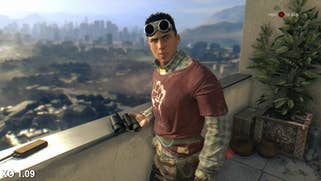
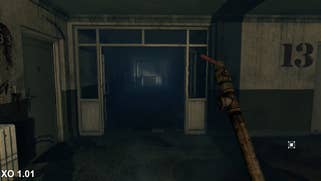
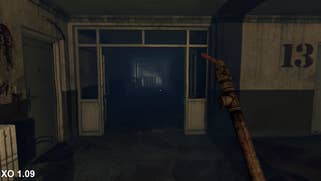
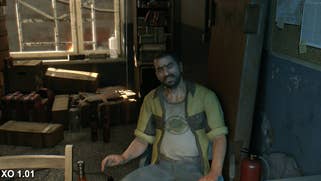
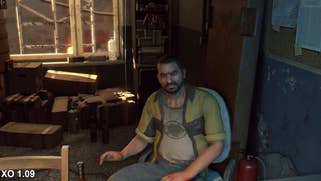
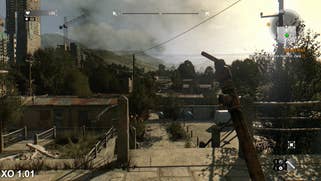

PlayStation 4: Looking good, but compromised by spiking frame-rates
Looking at PlayStation 4 we actually have a rather different situation on our hands. When it first launched last year the PS4 version suffered from a lack of anisotropic filtering which resulted in blurry textures at oblique angles. Thankfully, in version 1.05, this was addressed and selective AF was implemented bringing it on par with Xbox One in this regard. Version 1.05 also modified the density of foliage in order to improve performance on all platforms. This means, even on the PC, we see a general reduction in the flora and fauna. Of course, the PlayStation 4 version continues to operate at full 1080p while offering faster overall performance - drops under 30fps are extremely uncommon on Sony's platform. Oh, and Dying Light: The Following also makes use of the recently unlocked seventh core on the PS4 as well.
This would be all well and good if not for one seriously frustrating bug that has plagued Dying Light from day one - frame-rate spikes above 30fps. Now, on paper, this doesn't sound awful. We're certainly not fans of the added judder one must deal with when running with an unlocked frame-rate (as seen in Killzone Shadowfall and Infamous Second Son - both of which added a 30fps lock option), but that's not what we're seeing in Dying Light. No, in areas where there is rendering power to spare, such as indoor locations or when looking towards the sky, we see a flurry of frame-time spikes to 16ms. Like an inverted version of the Xbox One standby mode bug, the game appears to use a double buffer v-sync setup in these situations.
This back and forth between 16ms and 33ms is remarkably jarring as the game is effectively rapidly alternating between 30fps and 60fps. This impacts controller input and the general presentation producing a lurching sensation that is highly annoying. As noted, this occurs primarily indoors or while in less demanding outdoor areas. Here's the thing, though, the Enhanced Edition is further optimized than the original release and, as a result, these frame-time spikes have become more common.
If the frame-rate is clamped down to 30fps with no opportunity to go beyond this point, the PS4 would have a nigh-on locked frame-rate. It really is a shame that this problem remains. We pointed it out in our original coverage and have continued to keep tabs on the situation. With Techland updating the game so regularly we were disappointed each and every time this situation went unresolved. The fact that the game now suffers more regularly from this issue in the Enhanced Edition is deeply disappointing.
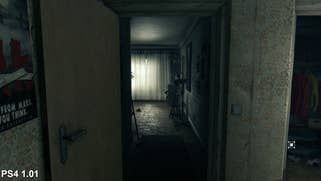

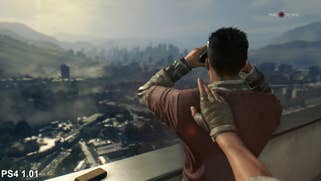
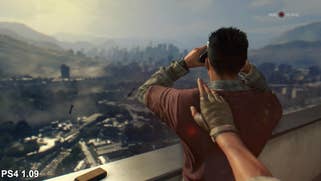
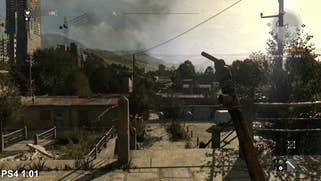

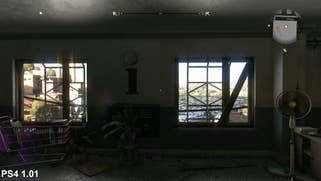
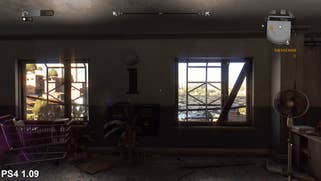
PC: By far the best way to play Dying Light
Finally, we come to the true definitive version of Dying Light - the PC release. The game runs extremely well on the PC platform even on mid-range GPUs. It's possible to enjoy Dying Light at a smooth, stable 60fps or, on weaker hardware, at least a locked 30fps. The issues we encountered on consoles are non-existent and visual quality can be pushed out even further.
That said, version 1.05 also eliminated some of the foliage on PC. It's a curious change but has a rather minor impact on the end results overall. The game is still plenty lush especially with the draw distance maxed out. Though, when it was first launched, the draw distance slider actually had a dramatic impact on performance and could tank frame-rates pretty handily. Thanks to optimisations, including the slight reduction in foliage, this is no longer an issue.
The PC version, of course, includes all of the options available on console and more. The field of view is freely adjustable with a slider and some Nvidia enhancements, such as depth of field, are available as well. It's suitably customisable and works like a dream. If there's any version of Dying Light to play, it's clearly the PC version.
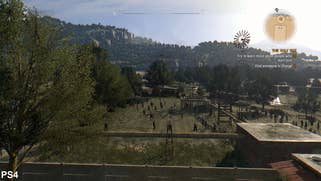
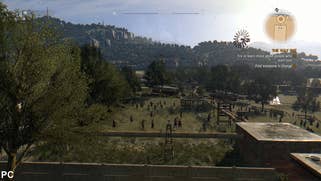
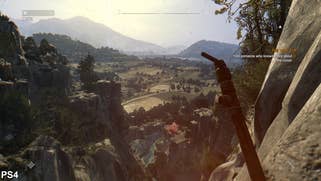
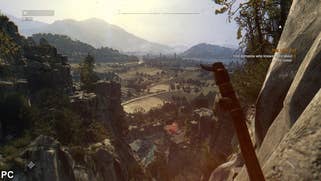

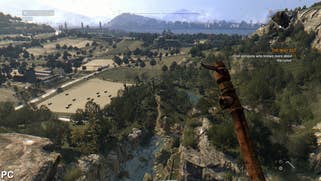
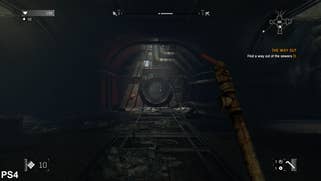
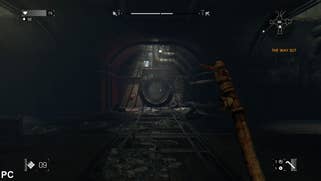
Dying Light: The Following - the Digital Foundry verdict
Overall, there's solid progress here in this enhanced edition. All three versions of the game now include more content, additional features, and some nice enhancements while performance is often smoother and the package is more refined. However, we simply cannot ignore the performance quirks on consoles. The PS4 frame-time spikes are jarring and intrusive, while the need to disable one of the Xbox One's most useful features to guarantee decent performance is even more frustrating. These issues may seem minor on paper but the reality is that they are problems that should not be present in a definitive release - especially one which has received so much attention from its developer over the past year.
It's for that reason that we have to recommend the PC version here. It's clearly the most optimised of the bunch and suffers from none of these frustrating issues. That doesn't mean it isn't worth playing on consoles, but you need to consider how much the problems we've highlighted might impact your experience. If you can deal with variable frame-rates in certain situations, the PS4 version is worthwhile. Likewise, if you're not opposed to disabling Instant On on your console or simply rebooting regularly, the Xbox One version is also quite solid.
Still, the end result in that regard remains disappointing nonetheless - especially for those sensitive to performance issues. On an optimistic note, the challenges facing the console versions could be overcome relatively easily, especially on PlayStation 4, where introducing the same 30fps cap as Xbox One (even as an option) would make a world of difference. Whether Xbox One can be so quickly fixed remains unknown, as the code seems to be directly impacted by a system-level feature. Our concern here is that these issues are not new - they have been part of Dying Light for a while and even with the release of a major new revision, the same problems persist. Hopefully by drawing attention to them, we can see some positive movement forward here from Techland.
